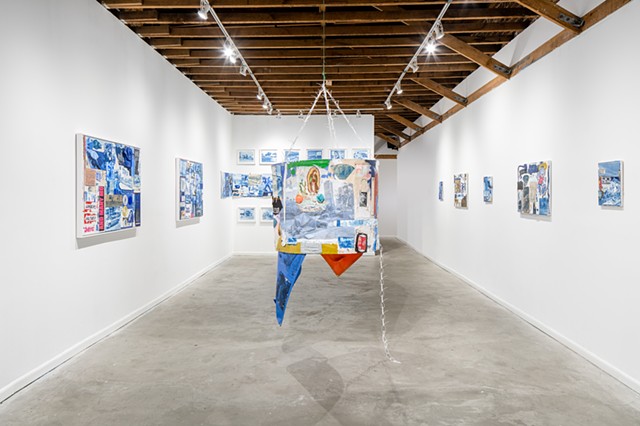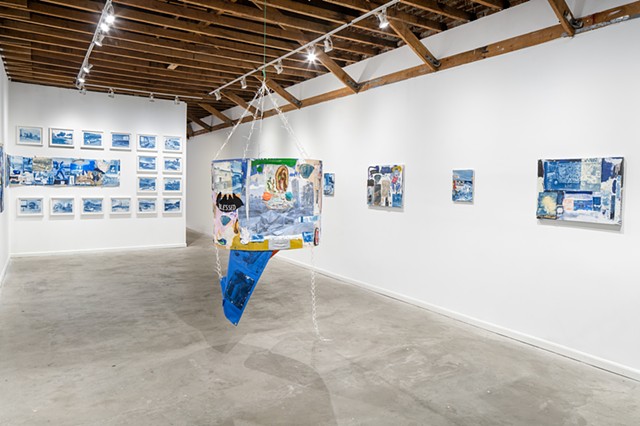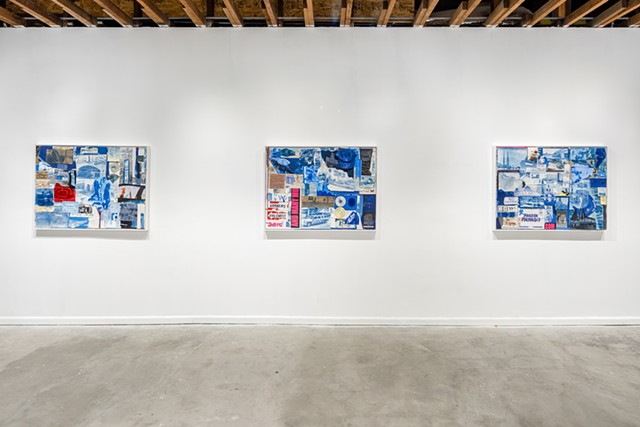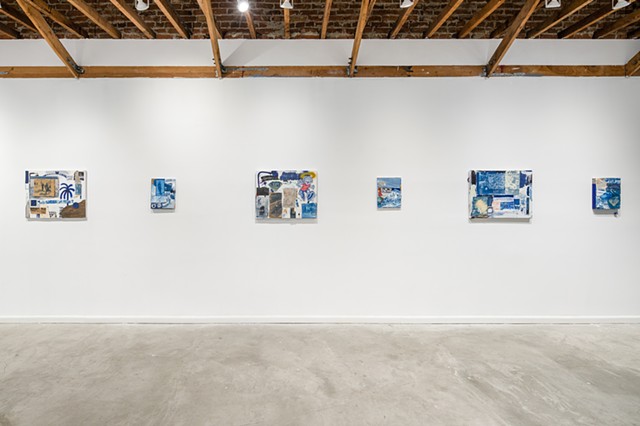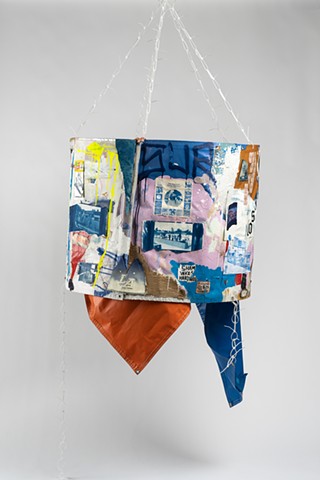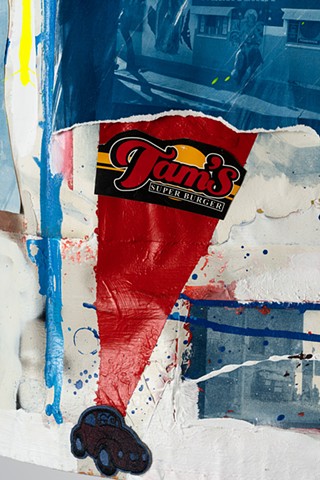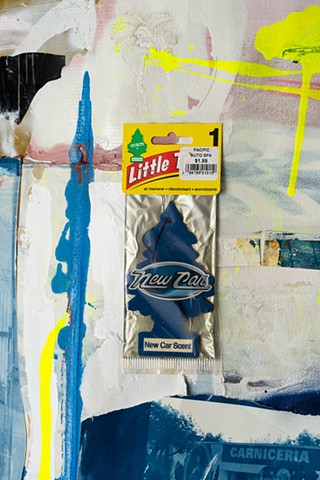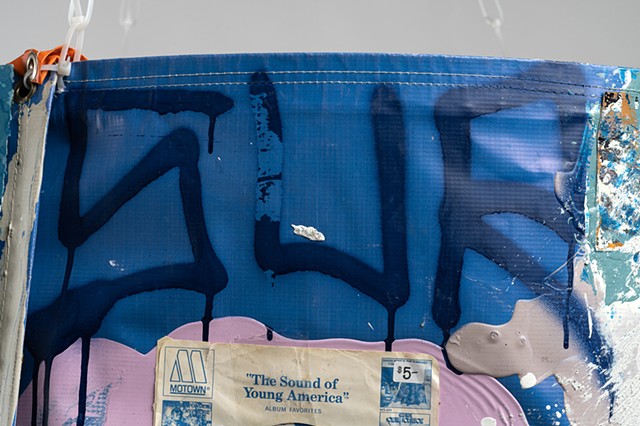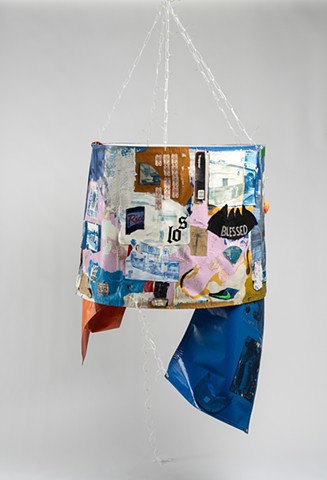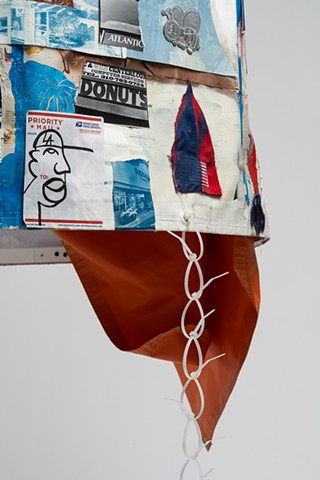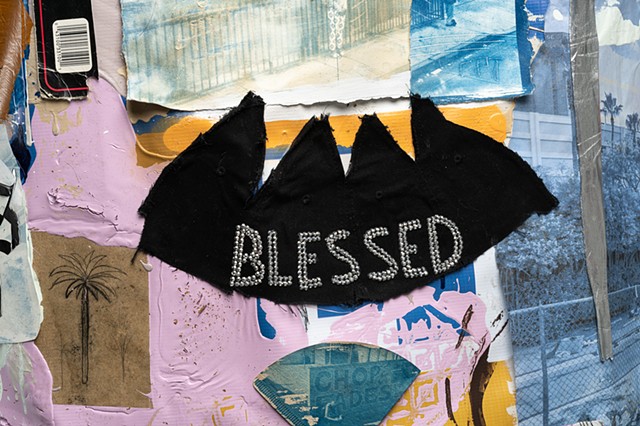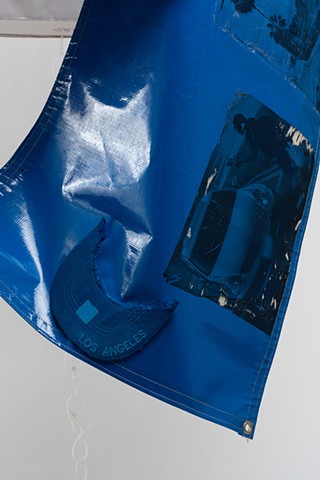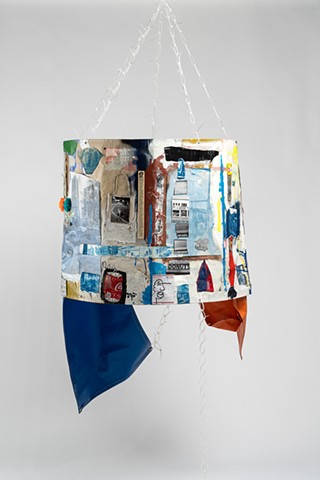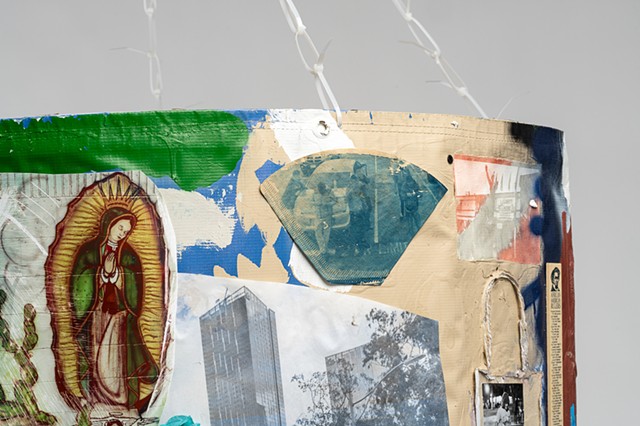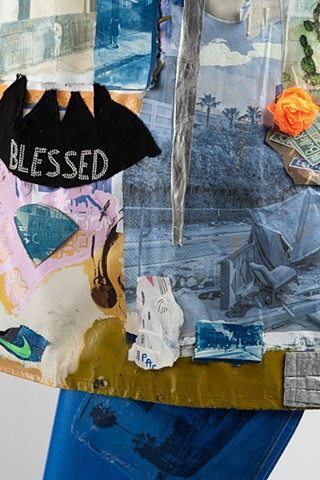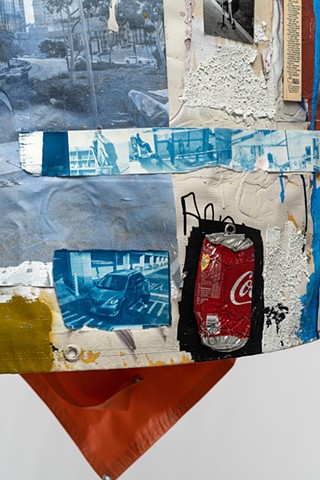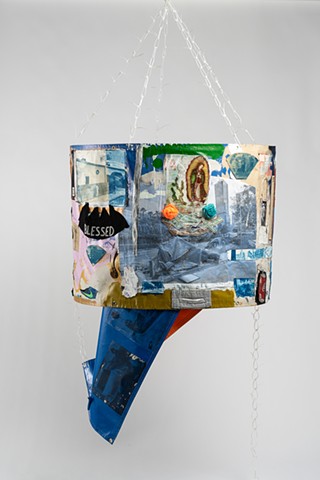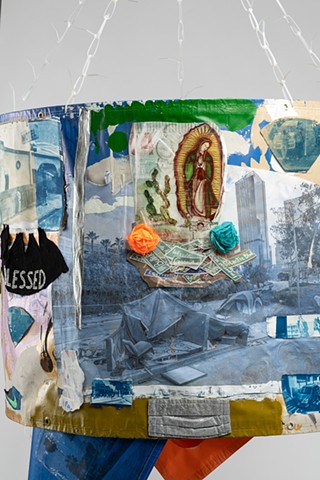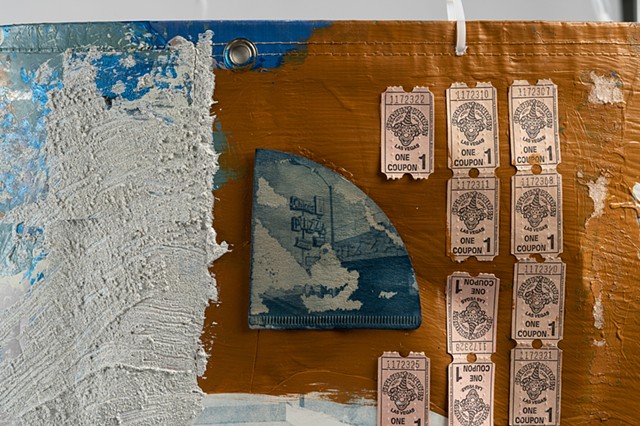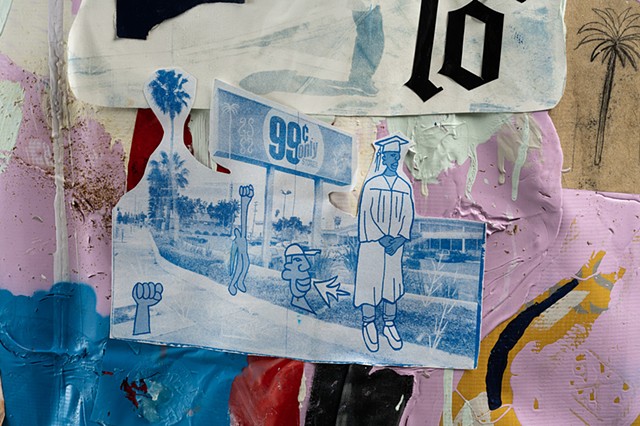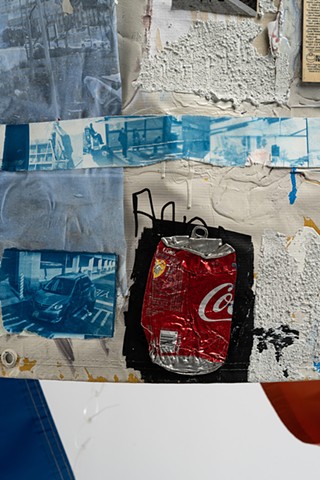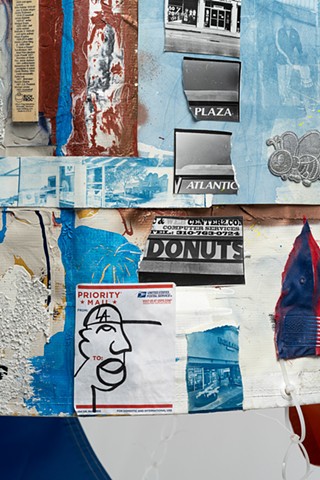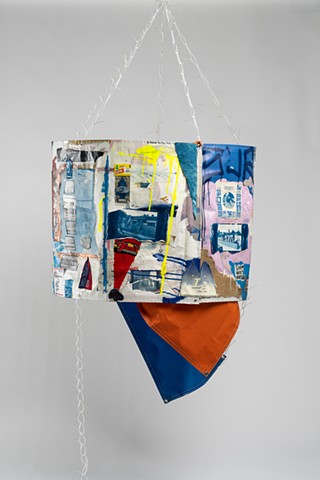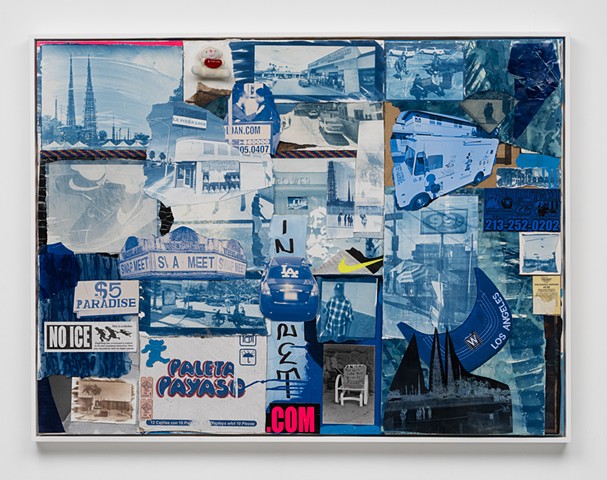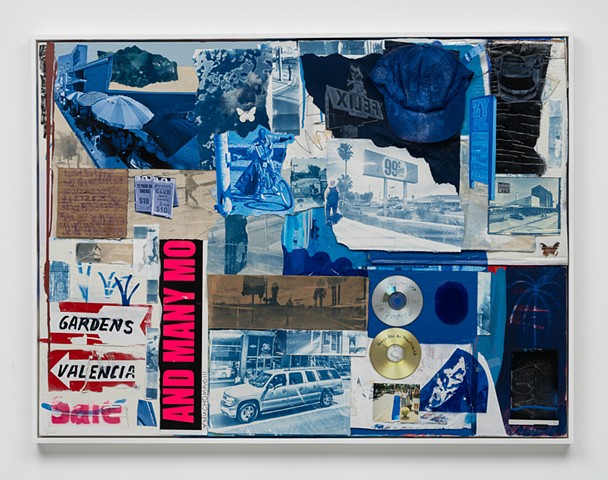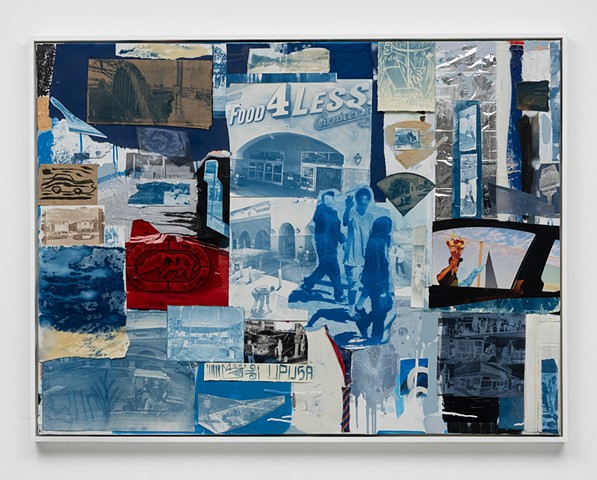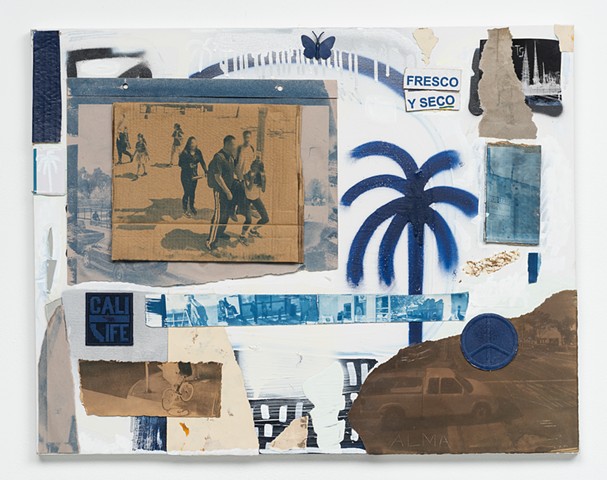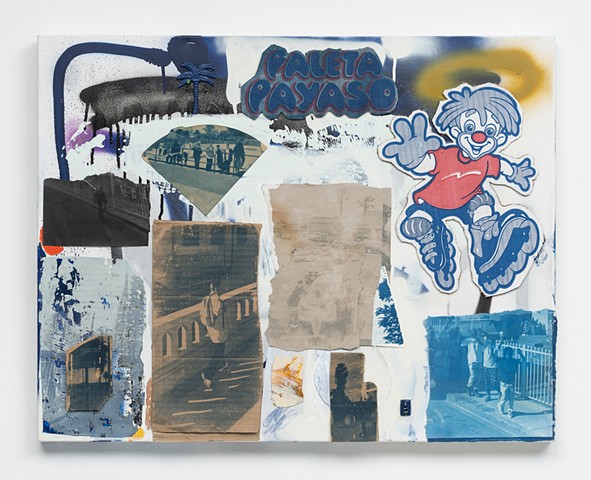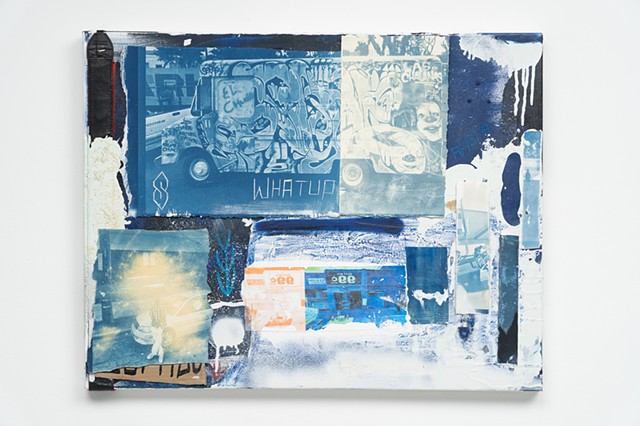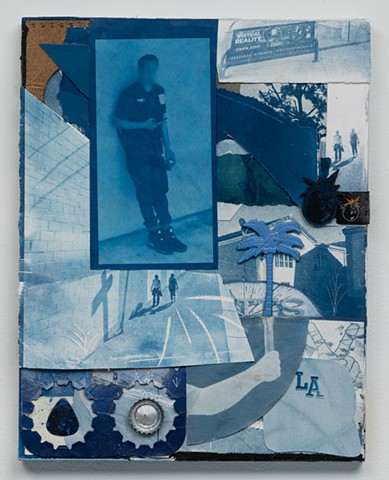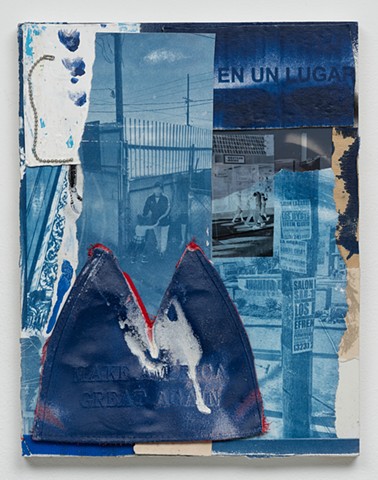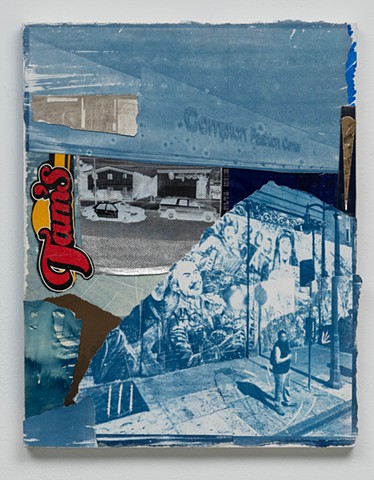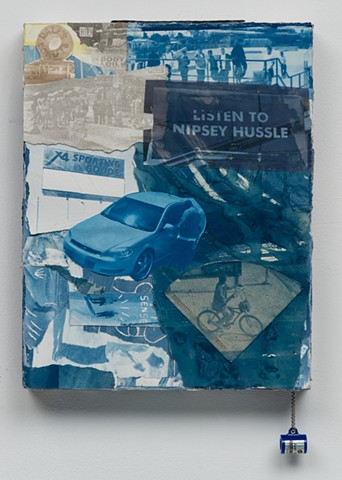Cruising Below Sunset (2022)
Cruising Below Sunset essay by Javier Arellano Vences
In Cruising Below Sunset, artist Felix Quintana engages with the historical documentation and mapping of migrant communities across Los Angeles County, adjacent unincorporated neighborhoods, and the City of San Jose. Quintana employs a mixture of digital and analog photographic processes, sculpture, collage, and installation to reflect on everyday cruisers (i.e., working-class people on the move) impacted by the regulation and surveillance of human mobility, migration, and displacement.
The exhibition’s title, Cruising Below Sunset, is polyvalent in meaning. It is a nod to Ed Ruscha's Every Building on the Sunset Strip (1966), an accordion artist book that included photographs of the 1.5-mile section of Sunset Boulevard, and his documentation of much of the boulevard’s longer 21-mile stretch from Pacific Palisades to Downtown Los Angeles. Like Ruscha, Quintana utilizes photography as a form for conceptual topographical studies that often capture the ever-shifting landscape of Los Angeles. However, Cruising Below Sunset situates the numerous communities that reside south of Sunset Boulevard, such as Inglewood, Lynwood, Compton, South Central, MacArthur Park, Pico Union, Westlake, Watts, and East Los Angeles—where Sunset turns into Avenida Cesar E. Chavez (formerly Brooklyn Avenue until 1994) and just a few blocks from where Ruscha stopped documenting the street. Quintana’s title also invokes the golden hour, a time just before sunset that photographers favor for its lighting and when car club enthusiasts roll out onto the streets to cruise and entertain their Black and Brown onlookers.
Showcased in Cruising Below Sunset is Quintana’s Los Angeles Blueprints (2019-Present), a series of reworked Google Street View images that capture pedestrians in working-class communities. Street View, a navigation tool, favors roads and architecture while rendering pedestrians indifferent. So, the original Street View images unintentionally recorded everyday intimate moments in public, such as mothers walking their children, cyclists strolling through the neighborhood, and students conversing. In Los Angeles Blueprints, Quintana reintroduces a sense of dignity and agency to these subjects through a combination of formal strategies. He converts the digital Street View images into cyanotypes, an early photographic process that produces blueprints using coated paper and light. This technical move from digital photography to an early manual photographic process foregrounds the intimacy that the Street View format impedes by expanding the processing time of each image, disrupting the reproductive immediacy of digital images, and introducing contemplative, monochromatic, serene blue hues. Additionally, Quintana crops the images and integrates etchings of vernacular iconography associated with the Los Angeles landscape, such as vegetation blooming from concrete, glyphs of roaming street coyotes, and drive-through business signage. Quintana also etches short poetic text, stylized as graffiti, to accentuate local aesthetics and sensibilities and reflect the ever-present grace and hardship of these communities.
Cruising Below Sunset juxtaposes the cyanotypes with a new series of collages and sculptures from Quintana’s family archive and miscellanea sourced from mobile marketplaces, such as swap meets and street vendors. These works playfully chart points of connection between distant locales dear to Quintana, including greater Los Angeles County, which he calls home; his mother’s hometown in Ahuachapan, El Salvador, which he frequented during summers as a child; and San Jose, California, the site where he earned his MFA and mentored Black and Brown youth as an arts educator. An extension of the artist’s body and the lived experiences he shares with others, Quintana reframes the presentation of youth from these multiple locales and periods to elevate and reimagine them in extraordinary ways and with a sense of pride and honor.
This exhibition is a tribute to the resilient and contemplative youth, the younger self, and the families that find ingenious ways to carve homes across the lands they traverse despite distance and separation. This one's for you; keep it moving…

